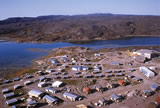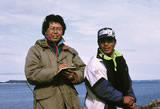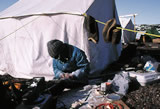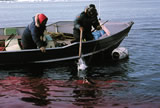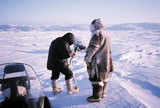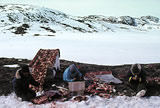| Research: Index > Primitive life forms and the form of the earth-Inuit knowledge and modern science |
| Narrative science Primitive life forms and the form of the earth -Inuit knowledge and modern science | |
| |
| Omura studies the traditional ecological knowledge of the Inuit tribe. Since 1992 he has visited Kugaaruk (formerly Pelly Bay), Nunavut, Canada, participating in Inuit hunts and interviewing tribal elders. The indigenous inhabitants of Canada's polar region, Inuits often have been respectfully referred to as the scientists of the far north for their keen powers of observation, insatiable curiosity, and wealth of knowledge developed from their hunting, fishing, and gathering activities over the past several centuries. This knowledge is effective for understanding the behavior of wild creatures and the changes in the environment, as well as striving for the sustainable use of the environment. Their paradigm for understanding the world is based on an integrated view of the environment in which human beings and the environment are perceived as a single entity. There is increasing interest in their views as a paradigm that is a contrast, but equal to, modern science. | ||||||
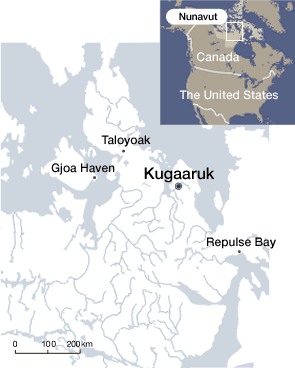 |
|
|||||
| Tactics and Strategy The basis of Inuit knowledge is not objectifying and controlling the environment, but immersing oneself in the environment and taking advantage of its latent power to adroitly bring forth tactics. The Inuit call this view ihuma (reason). In contrast, they think the strategy of modern science, which reduces the diversity of complex phenomena to general laws and principles, is childish and lacks reason. Modern science has made our lives more abundant, but it lacks an adaptable ingenuity that precisely elicits the latent power of the environment. Inuit knowledge, as a science of the wild, has unlimited potential. The path to the creation of a new science may open up as the two existing sciences join forces. |
|
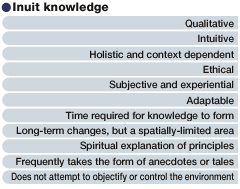 |
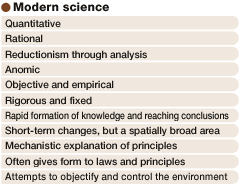 |
| ||
|
|
The relationship between the environment and civilization and the near future told by annual laminated sediment sequence | ||
| Rsearch |
|
Please close a window with the button of a browser who are turning off Javascript. |
